
Junior Smith knew he messed up.
One afternoon in December 2012, high on Vicodin he bought at school, Junior broke into a neighbor's garage after asking around to make sure no one was home — only to get caught when the neighbor, Cindy Chevechko, turned out to be there after all.
Junior said he was looking for beer, and the Cevechkos, relieved the burglar was just a 17-year-old kid, wanted him to get off easy — community service, maybe. But in a preliminary hearing on Feb. 11, 2013, West Virginia Circuit Judge Alan Moats implied that Junior had much more sinister plans.
"Now if you want to walk out of here today without chains on you had better go back to the beginning and tell me what you were doing, what you were up to," Judge Moats said at the time, according to court transcripts. "Because if I even have a suspicion that you were there to molest her, rape her, sexually assault her, you're going to go today."
Moats warned Junior that "there are no second chances" and put him on probation. Ten days later, Junior got in a fight at school — run-of-the-mill horseplay, Junior claims. He never had a chance to explain himself. The following week, the sheriff's deputy picked Junior up at school and escorted him to the state's most draconian juvenile detention center in handcuffs, according to legal documents. No one notified Junior's parents beforehand, they say.
"They took him away without warning, without even trying to figure out what happened," said Kathy Jo Smith, Junior's mother. "It felt like they just wanted him locked up."
Junior and his family didn't realize that Junior's future was in the hands of a tough-minded judge with harsh views on juvenile justice. Moats is respected by legislators and the state supreme court, and feared by constituents who call him names like "the Godfather" and "the hanging judge" in whispers and on local online message boards. The architect of a popular statewide anti-truancy initiative that preceded a sharp rise in juveniles in state custody, Moats does not seem to have much patience for kids who have made mistakes — or for parents who beg him to go easy on their kids.
"Yeah, my kids made mistakes, and all kids make mistakes, but they need to realize our system is broken," said Smith. "They look at us like we are the problem, but really families are part of the solution."
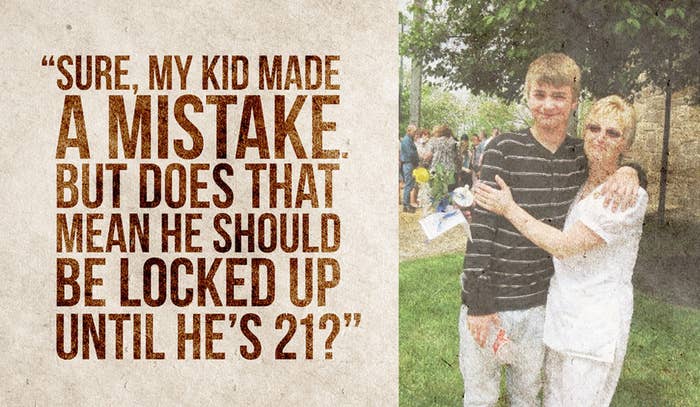
In 2010, West Virginia passed legislation that lowered the number of unexcused absences required for a student to be considered truant from 10 to 5 and raised the minimum age for ending compulsory school attendance from 16 to 17. The state also implemented a resolution that pressed school boards and judicial circuits around the country to adjudicate truant students as "status offenders," minors who commit offenses that wouldn't be considered crimes if they were adults.
Suddenly, it was way easier for kids to be truant — and it was easier for them to go to court for it, too. "The data is just shocking," said Mishi Faruqee, a Juvenile Justice Policy Strategist at the American Civil Liberties Union. "Kids are being incarcerated for truancy."
The youth confinement rate is rapidly declining in the United States, and juvenile crime has fallen along with it. But although West Virginia has one of the lowest juvenile crime rates in the country, it experienced the largest increase in youths confined to juvenile facilities of any state in the country between 1997 and 2011.
Most of those kids aren't criminals. An increasing number of West Virginia kids in out-of-home placement are status offenders, and recent data analysis by Pew Charitable Trusts suggests that the hardline approach to truancy pioneered by the state's judges — and initiated by Judge Moats — is at least partially to blame.
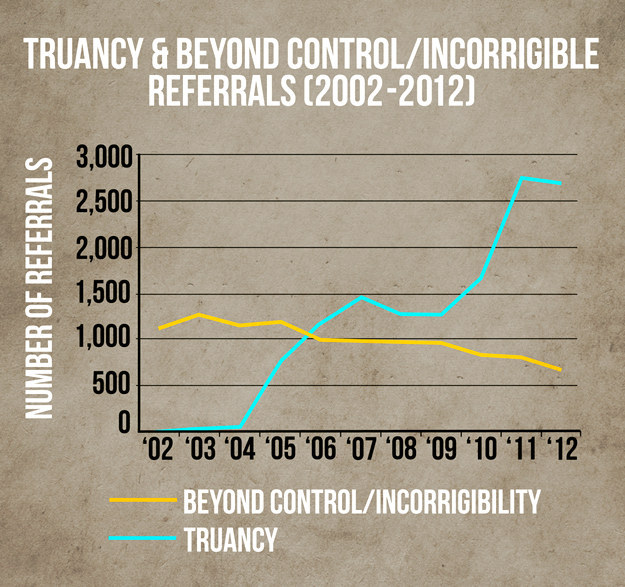
Moats is a former prosecutor who has been a state circuit judge since 1996. He ran uncontested in his last election in 2008. Moats told the West Virginia Record in 2011 that he began his anti-truancy and dropout program after seeing many of the same people appear before him in criminal cases who had previously been in the courtroom for truancy.
The executive summary announcing the new truancy rule from the West Virginia Department of Education notes that Moats' program was the model for this "new approach to truancy" implemented statewide. Supreme Court Justice Robin Jean Davis, an early supporter, praised his efforts to both judges and reporters as the two traveled around the state spreading the word.
"I'm delighted to say that just about every circuit court judge across the state are following in Judge Moats' footsteps," Justice Davis told the Mountain Statesman in 2012. "This is working. We have seen results in less than a year ... the successes we have had in this state have been a direct result of Taylor County's programs, and one of the finest judges in the state, Alan D. Moats."
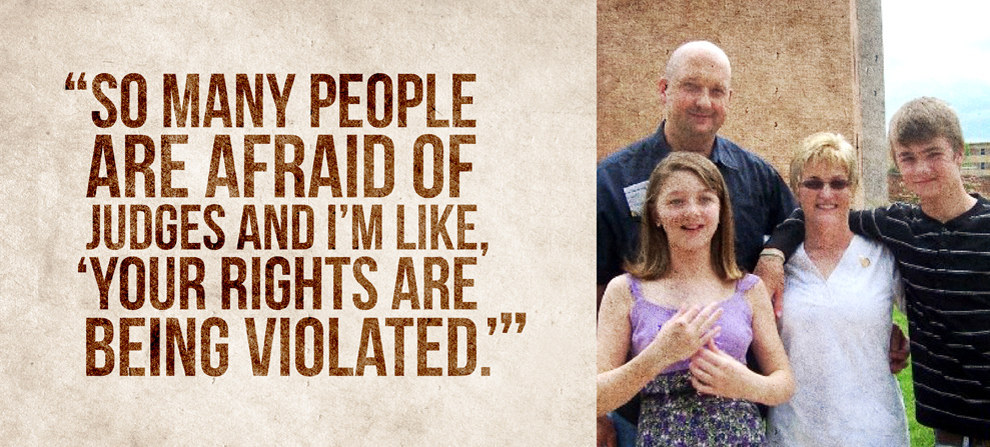
Truancy is a big problem in West Virginia; about one in five students had five or more unexcused absences in 2011, according to the Department of Education. But the efforts also spurred an influx of truancy cases that overwhelmed the Department of Health and Human Resources. When a judge decides a truant student is a status offender, case workers can try to provide in-home services for the family before further action is taken. If the case can't be resolved quickly enough, there's more of a chance that the youth will be placed out of home. That's how "status offenders" can end up in far-away facilities that resemble those reserved for young people who commit serious crimes, despite federal law that mandates otherwise.
"Before the truancies started, I carried caseloads [of] around 30 or 40," Shellie Clegg, a former state Department of Health and Human Resources worker in Jackson County, told the Sunday Gazette-Mail in 2012. "And then, when we started with the truancy issues, I was bombarded. I just wasn't able to handle it. It wasn't fair to me. The services we provide are not designed for these kids to begin with."
The increase in juvenile commitments has its price. It costs $83,000 per year to incarcerate a minor in a West Virginia Division of Juvenile Services facility (reserved for adjudicated youth convicted of serious violent offenses) and $105,000 to house a youth in less severe Department of Health and Human Resources-contracted facilities, according to data compiled by the American Civil Liberties Union. In 2011, West Virginia spent an estimated $31 million to confine youth, plus $25 million in out-of-state placements.
There is no evidence that longer lengths of stay in juvenile facilities reduce reoffending. West Virginia, one of the poorest states in the country, can't afford to foot the bill for programs that don't work. But if West Virginia's juvenile justice policies have become costly for the state, it's the families who feel like they're paying for it.
"There's no justice [in] locking Junior up until he's 21 without trying anything else first," Smith said.

Kathy Jo Smith called it "Operation Free Junior."
Junior spent more than 100 days in confinement before he was allowed to plead his case to Moats, according to court records. He claimed he and another student, Cory, had just been horsing around. But Cory, whose last name is withheld since he was a minor at the time, called it bullying, and said it had gone on all year. According to the juvenile petition that led to the battery charge, Junior had even doused Cory with diesel fuel months before, causing burns so severe that he had to seek medical treatment at a hospital.
Junior denied ever pouring any substance on Cory. In court, Cory said that Junior had poured "brake cleaner" and "kitty litter" on him. BuzzFeed News could not find any medical records corroborating that that Cory received related medical treatment of any kind, either through court documents or Cory's family.
Cory's mother told BuzzFeed News that she took her son to the hospital at the time because Cory has a "rare disease" and she thought the substance would cause Cory to "break out"; she said the hospital said Cory was fine.
The allegation that Junior had caused Cory serious harm was repeated in court hearings, documents, and psychological assessments. To Moats, it was just more proof Junior was dangerous.
"This case is about as troubling as most any that I have ever had," Moats said at the June 7 hearing. "It is a classic case of bullying, but yet we have other offenses, trying to break into a woman's house with her in it."
Junior's requests to attend a less restrictive center — "I want to change my life ... so when I get out of placement or a detention center or wherever you send me to stay clean [I can] keep my head up and stay out of trouble," he pleaded — were denied. Judge Moats said he thought Junior was too dangerous to be anywhere else but in the custody of the Department of Juvenile Services until he was 21, a punishment reserved for West Virginia's most violent offenders.
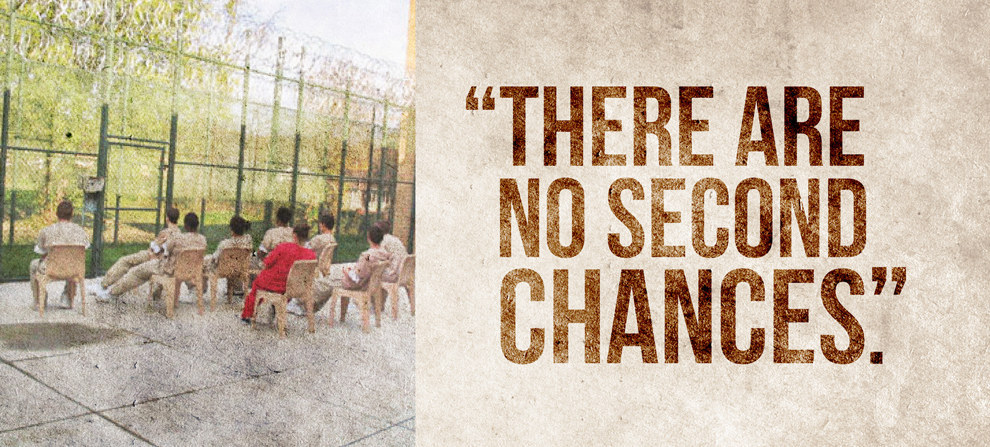
Smith — relentlessly cheerful, even when pissed off, which she is most of the time — started knocking down doors across the state, talking to anyone who would listen. She went to the state capitol. She went to the ACLU. She went to Justice for Families, a national family advocate-run network that has provided her with significant support.
"Mama was on a mission," she said.
Junior's family knew he was troubled; they were already drug testing him regularly and filling out applications for substance abuse treatment centers. Smith said Junior was also affected by a relationship with a custodian when he was in middle school who was later found guilty of distributing pornography. That's when Junior started drinking and getting into trouble.
"I think there should be 20 steps between probation and incarceration," Smith said. "But when I tried to tell them about his past, they acted like I was just making excuses."
Junior needed counseling, Smith said. Instead, he was treated like a criminal who had lost all credibility — and even a chance to defend himself before getting locked up. Smith's legal appeals were unsuccessful, but Junior was let go before Smith had exhausted her options. Altogether, Junior spent 13 months in three different centers.
"I think they knew I was a mom who wasn't going to shut up and go away," Smith said.
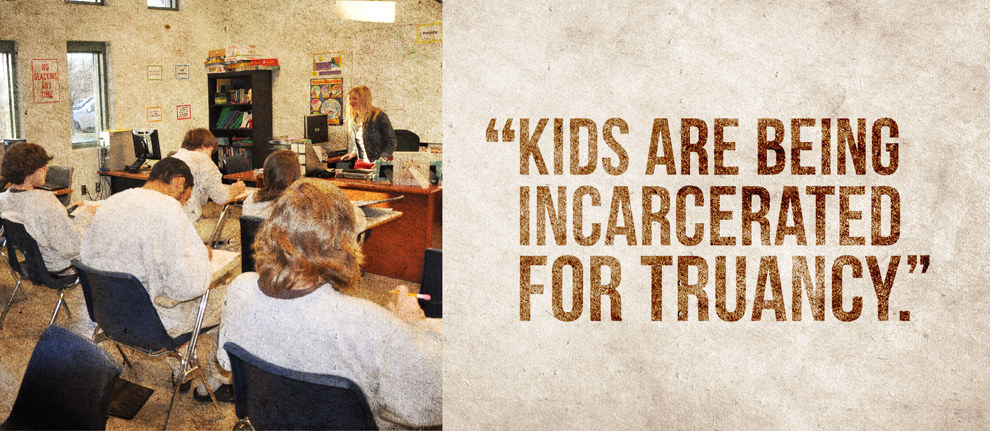
Smith's efforts caught the eyes of state officials. Following a high-profile investigation into the death of an incarcerated 15-year-old and subsequent lawsuits that alleged abuse and spurred the closure of two juvenile centers in 2013, Gov. Earl Ray Tomblin created an intergovernmental task force to work with Pew Charitable Trusts last July in hopes of reforming the state's juvenile justice system. They asked Smith to join a group of judges, educators, and juvenile justice administrators to review Pew's data and develop recommendations by December.
Some of the most alarming data shows that referrals to the court system for status offenses have increased by 124% since 2002. Nearly half of those were referrals for truancy. Almost three-fourths of status offenders in formal cases have no record of prior offenses.
The task force is considering how to increase access to a variety of alternatives to confinement, including "wraparound services" (intensive community-based support that emphasizes family collaboration), youth reporting centers that offer mentorship programs and education, and specialized foster care. The goal is to save money by creating more community based-alternatives to locking kids up.
But one of the toughest obstacles to changing the system may be the judges and policymakers like Moats, who believe they are rescuing kids from lives as career criminals by throwing the book at them early.
"There's no checks and balances, no accountability," Smith said. "So many people are afraid of judges and I'm like, 'Your rights are being violated.'"

Judge Moats could not be reached for comment by press time. Justice Davis told BuzzFeed News that she had not been able to review the most recent statistics on the rise in status offender cases for truancy but said she's heard from circuit judges across the state that truancy rates in schools are on the decline.
"It's a concern" if new policies are contributing to higher confinement rates, Davis said, "but I also think it's incumbent on parents to get their children to school. And then you won't have that issue." She added that national statistics show that 80% of all the persons incarcerated in prisons were truant as children.
Judges, probation officers, and other juvenile justice decision makers are often "going on their gut," said Joseph Garcia, deputy general counsel in the governor's office and chairman of the task force. "Instead of being reactive to lawsuits, let's make sure we have one of the best systems in the country. Let's stop spending so much money on placement and put it back into the community, which is shown to be more effective."
He stressed that it's a "chicken and egg situation."
"A lot of times you have judges that look at an awful family situation and want to get that kid out of there," Garcia said, "but feel like they don't have any other options."
Junior seems to have turned out OK. Now 19, he works seven-day shifts on a drilling rig, but says he wants to go to college someday. He's tall with dirty blonde hair and a shy but friendly smile. He doesn't like to talk about what it was like to be sent away.
"It wasn't fair," he said. "I don't think I was treated how I should've been."
Junior's encounter with the system changed his mother's life. She left nursing because of a medical issue last year and now spends most of her time fighting to change the juvenile justice system.
She worries about the children whose families don't have the time and energy to advocate on their behalf, and can't stop thinking about how disinterested the court was in trying to understand why Junior had problems.
"This is so much bigger than my son," she said. "I want other moms to know they're not alone, that someone is listening."
